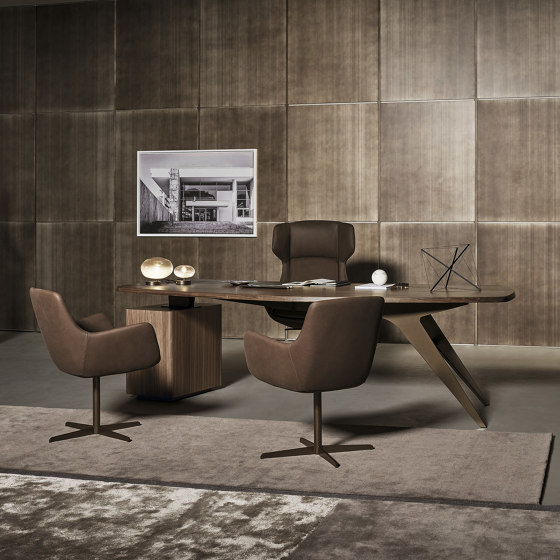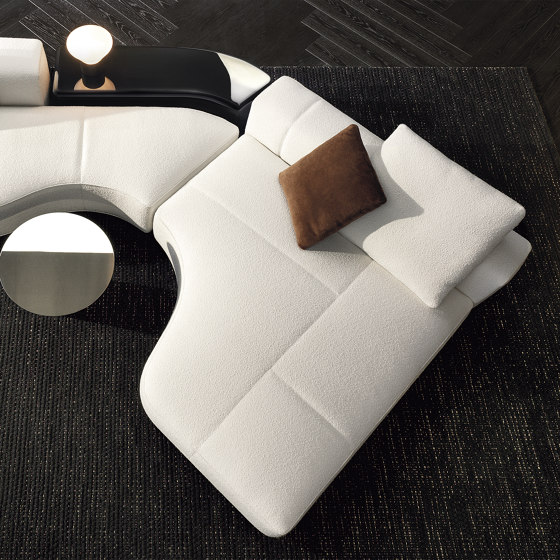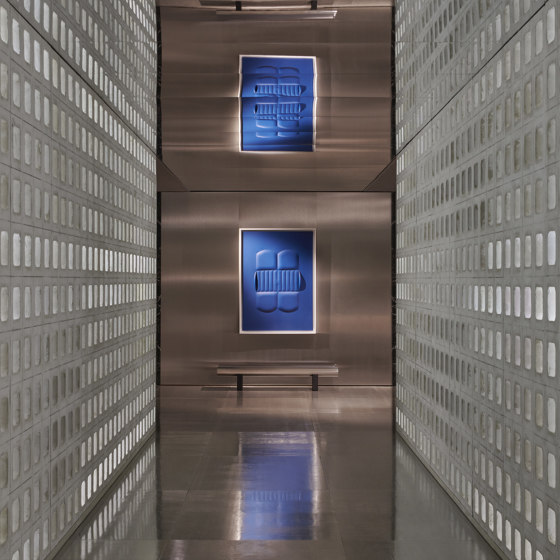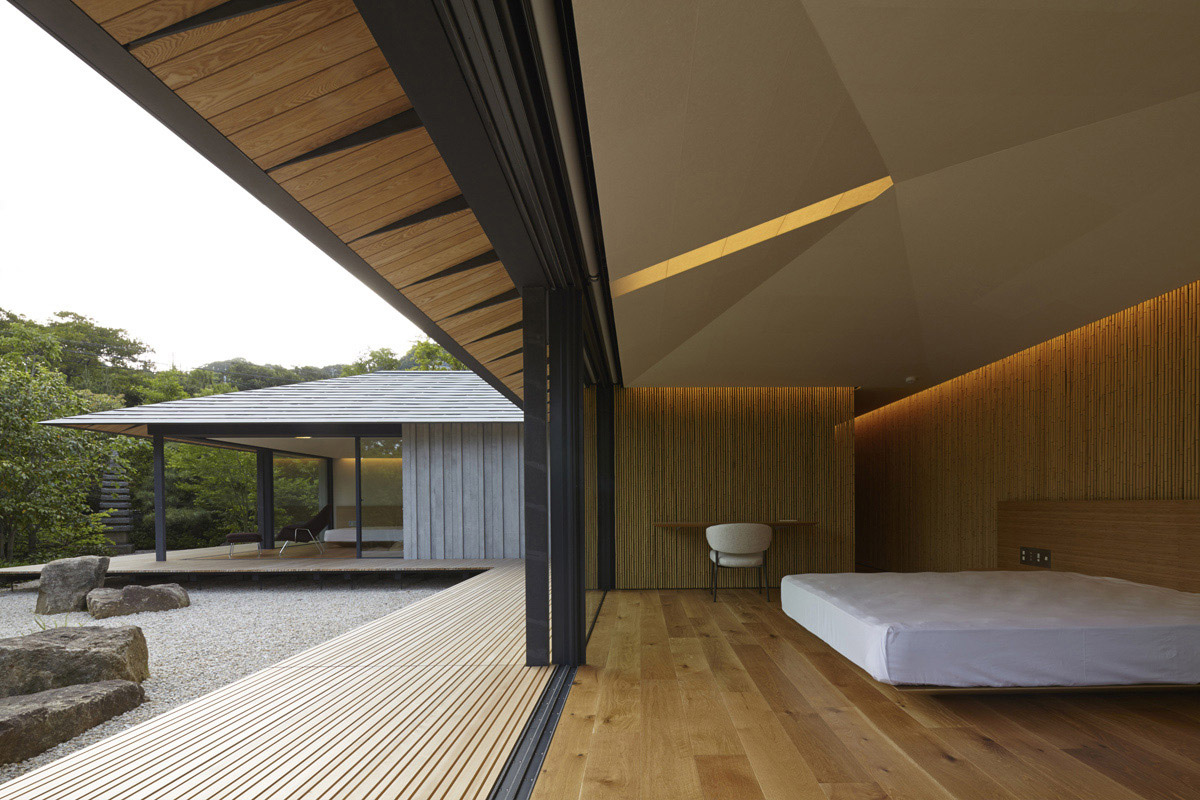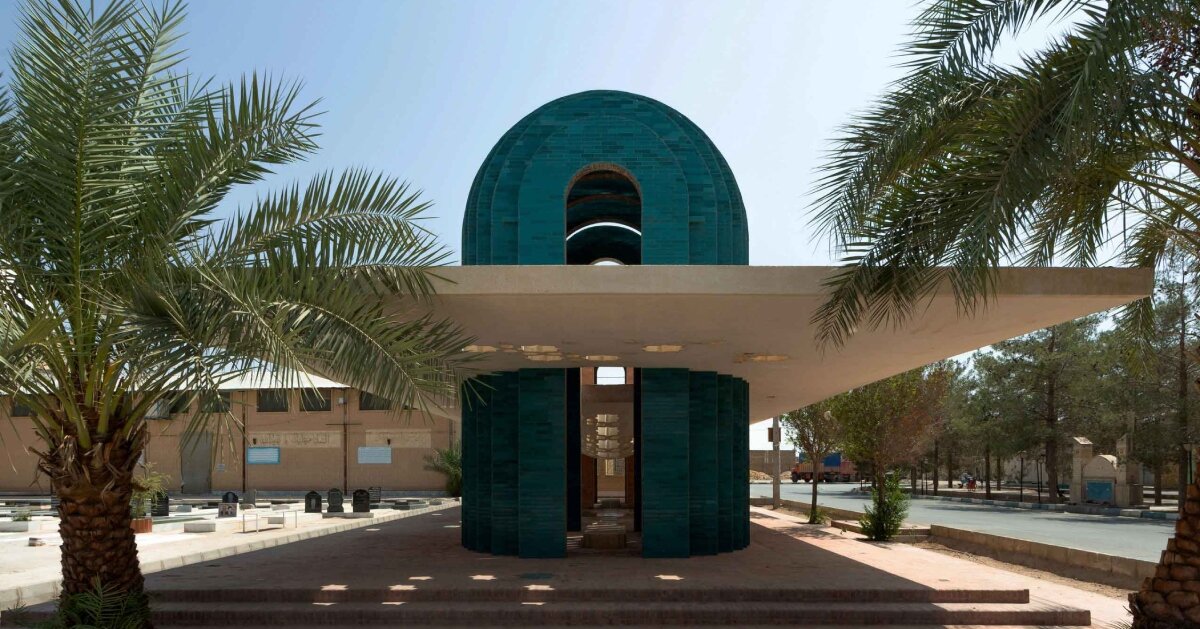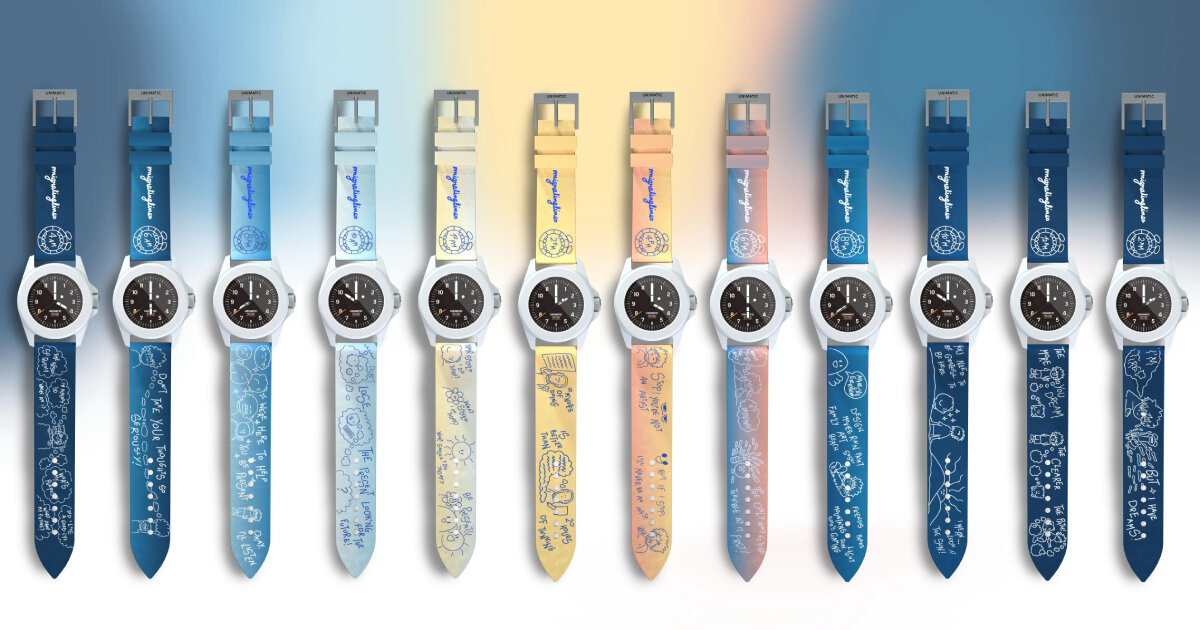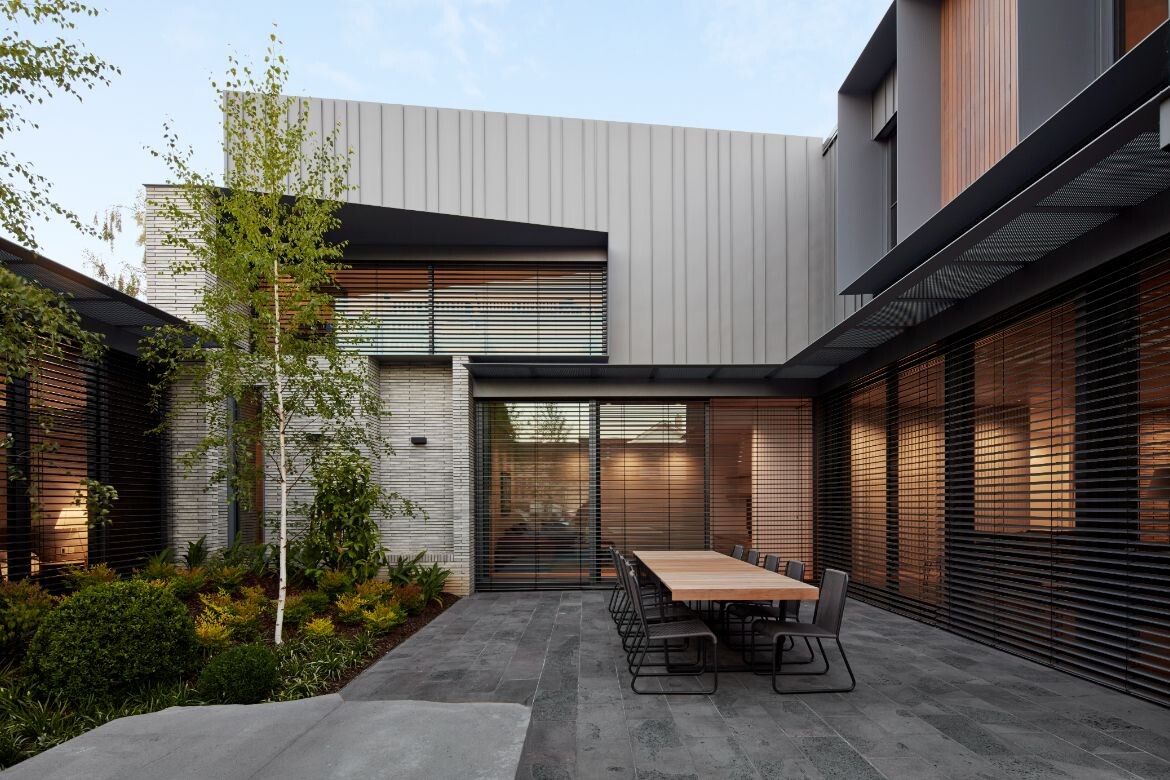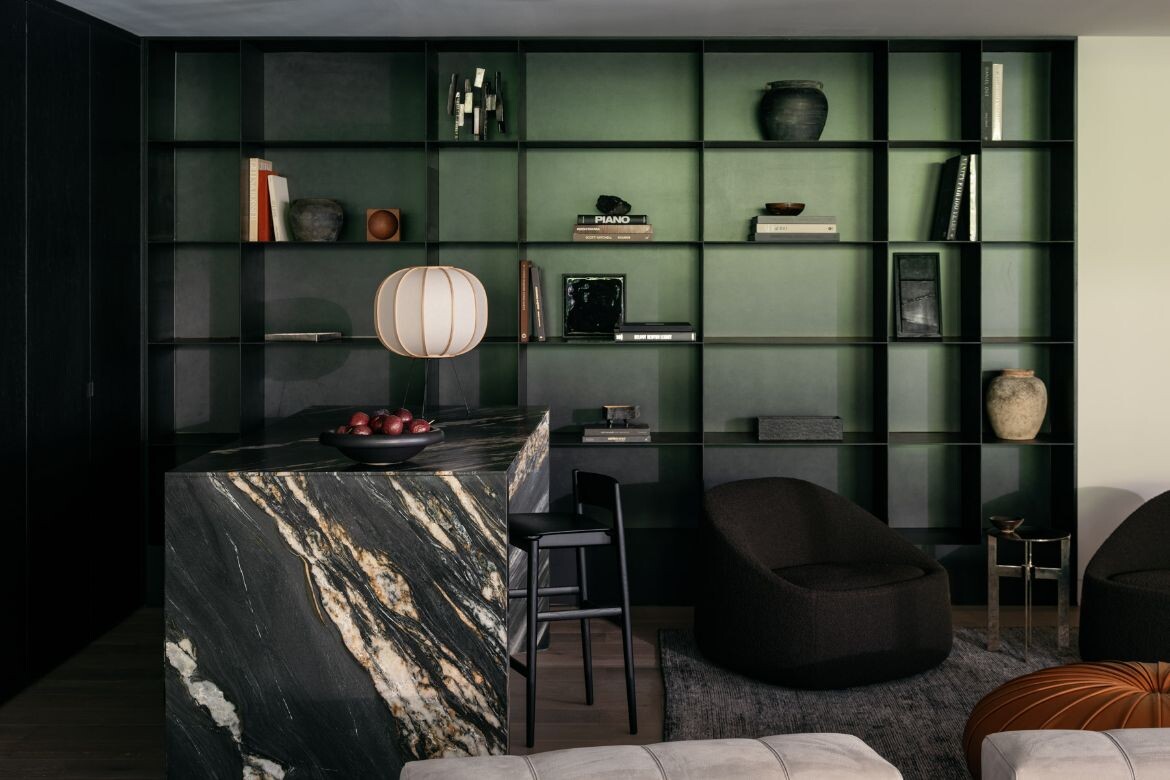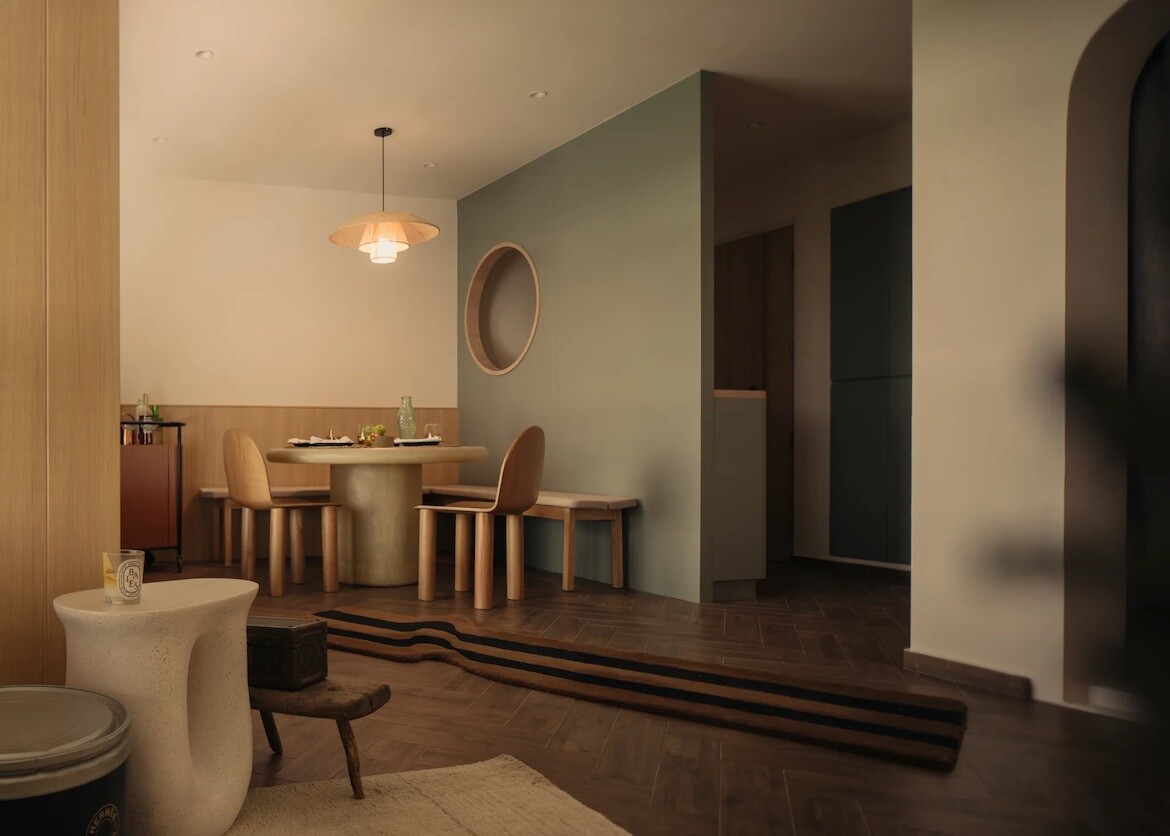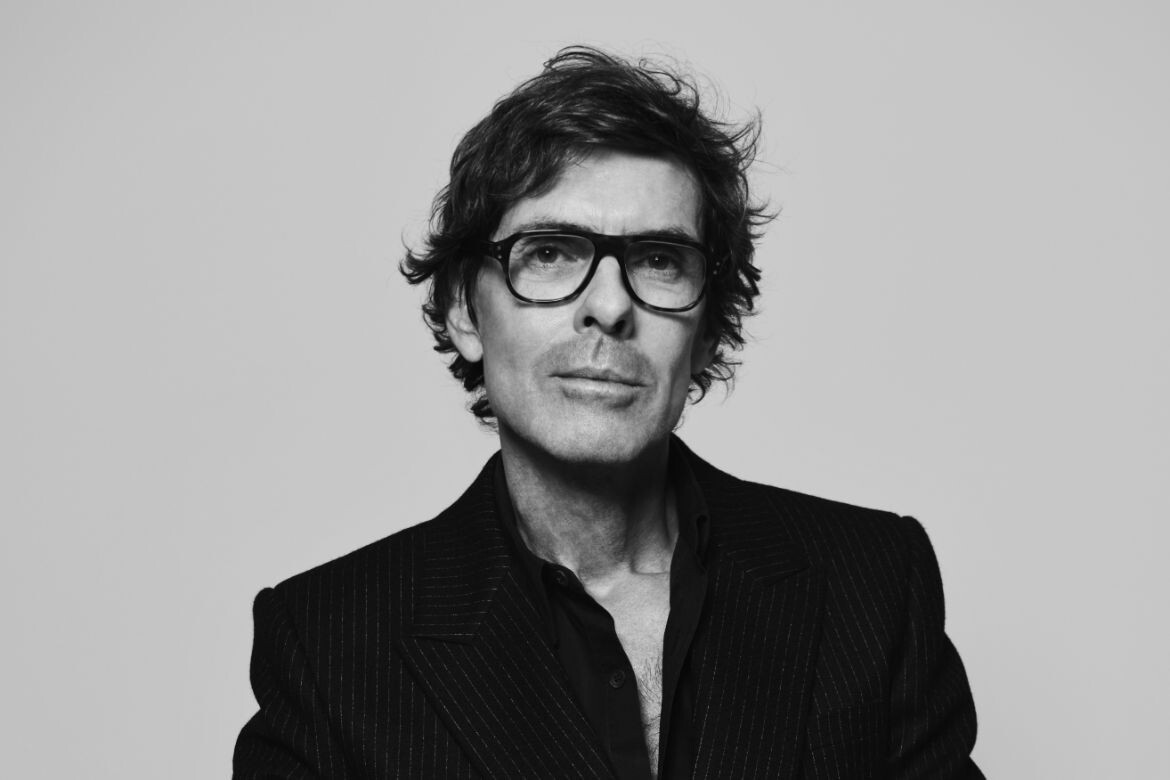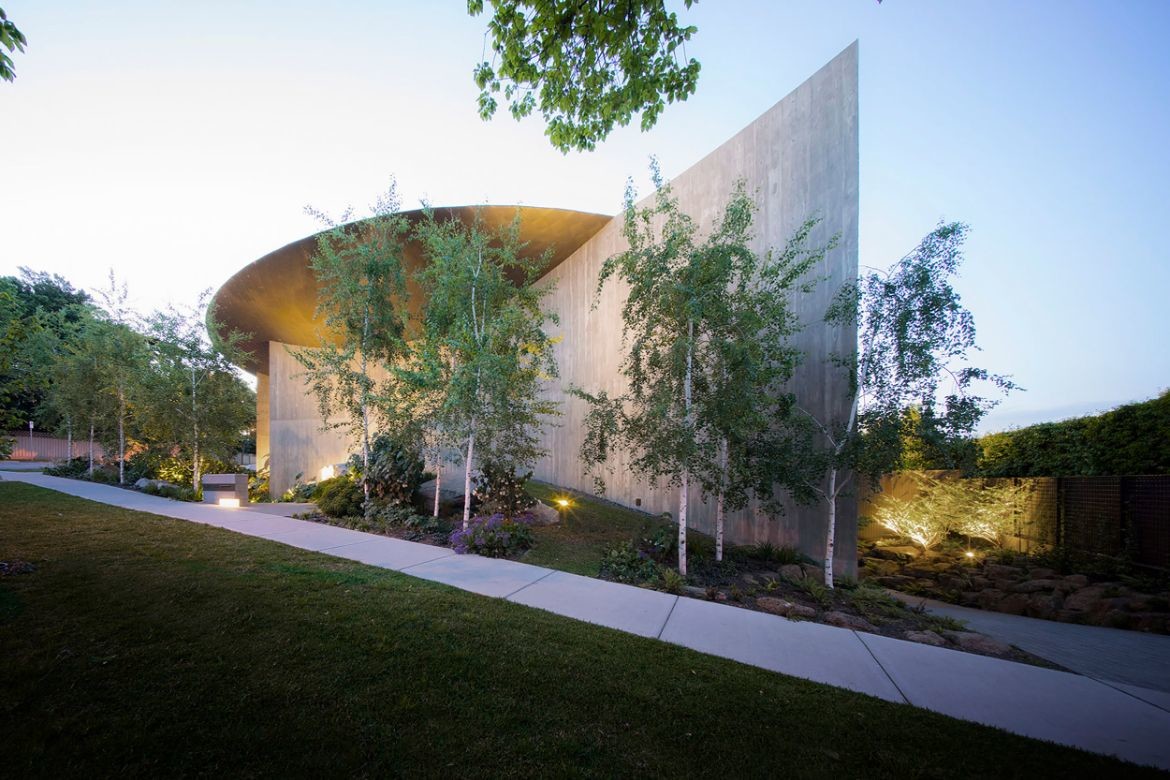ETH Zurich explores novel fabrication method for light and reusable concrete staircase
Material-saving and reversible construction approaches are showcased in the spine-like Cadenza concrete spiral staircase, created by researchers at technology university ETH Zurich working with ROK Architects. The Cadenza staircase is the latest contribution to the NEST building, a laboratory for experimental fabrication techniques that ETH Zurich shares with other research institutes in the Swiss city The post ETH Zurich explores novel fabrication method for light and reusable concrete staircase appeared first on Dezeen.

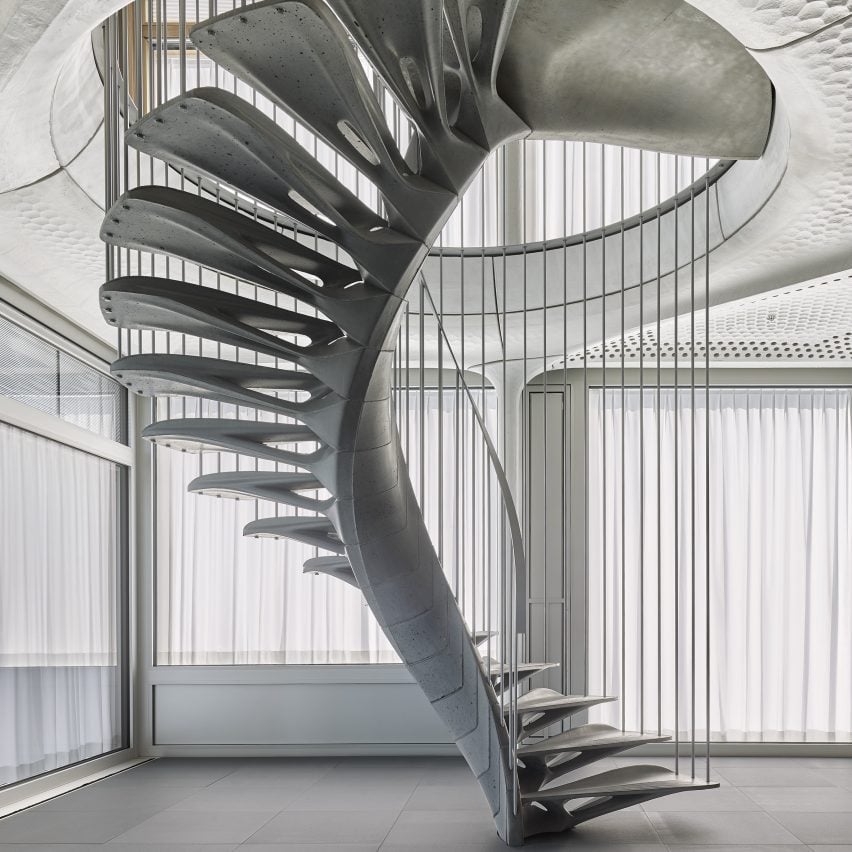
Material-saving and reversible construction approaches are showcased in the spine-like Cadenza concrete spiral staircase, created by researchers at technology university ETH Zurich working with ROK Architects.
The Cadenza staircase is the latest contribution to the NEST building, a laboratory for experimental fabrication techniques that ETH Zurich shares with other research institutes in the Swiss city of Dübendorf.
The Cadenza staircase was installed between floors in the building's latest unit, called STEP2, and features 16 identical prefabricated concrete steps arranged in a helical shape.
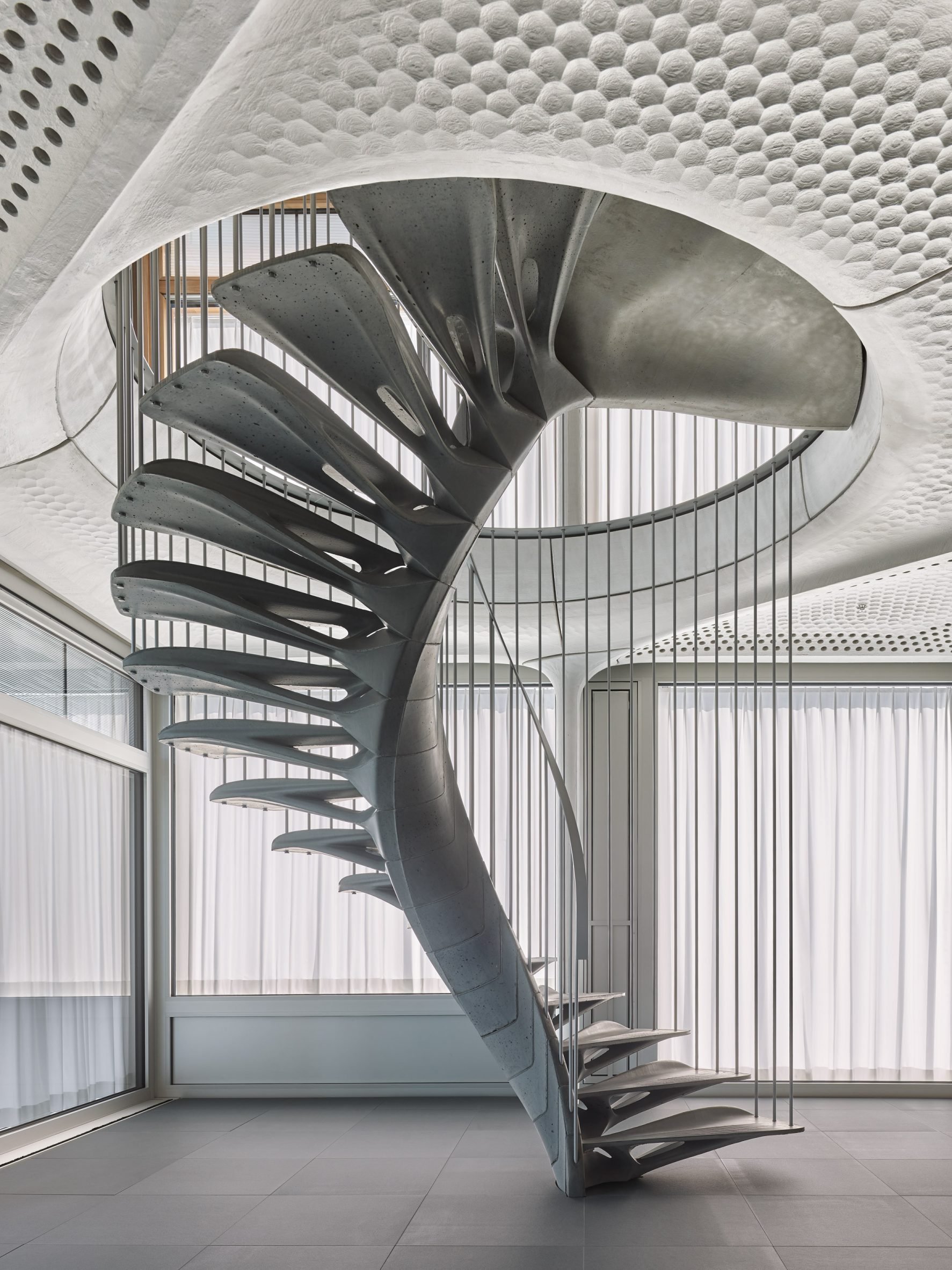
The steps were all made from the same 3D-printed mould, addressing the issue of waste associated with the single-use formwork commonly used for concrete, and are held in place by dry connections.
This means that they can be disassembled and reused in another building instead of being demolished.
The amount of concrete used was also kept to the minimum required, which adds to the staircase's unusual aesthetic of slender, skeletal-like forms.
ETH Zurich Digital Building Technologies head Benjamin Dillenburger said that the staircase symbolised the advantages of digital tools in architecture and engineering, and that the solution was ready to use in individual building projects.
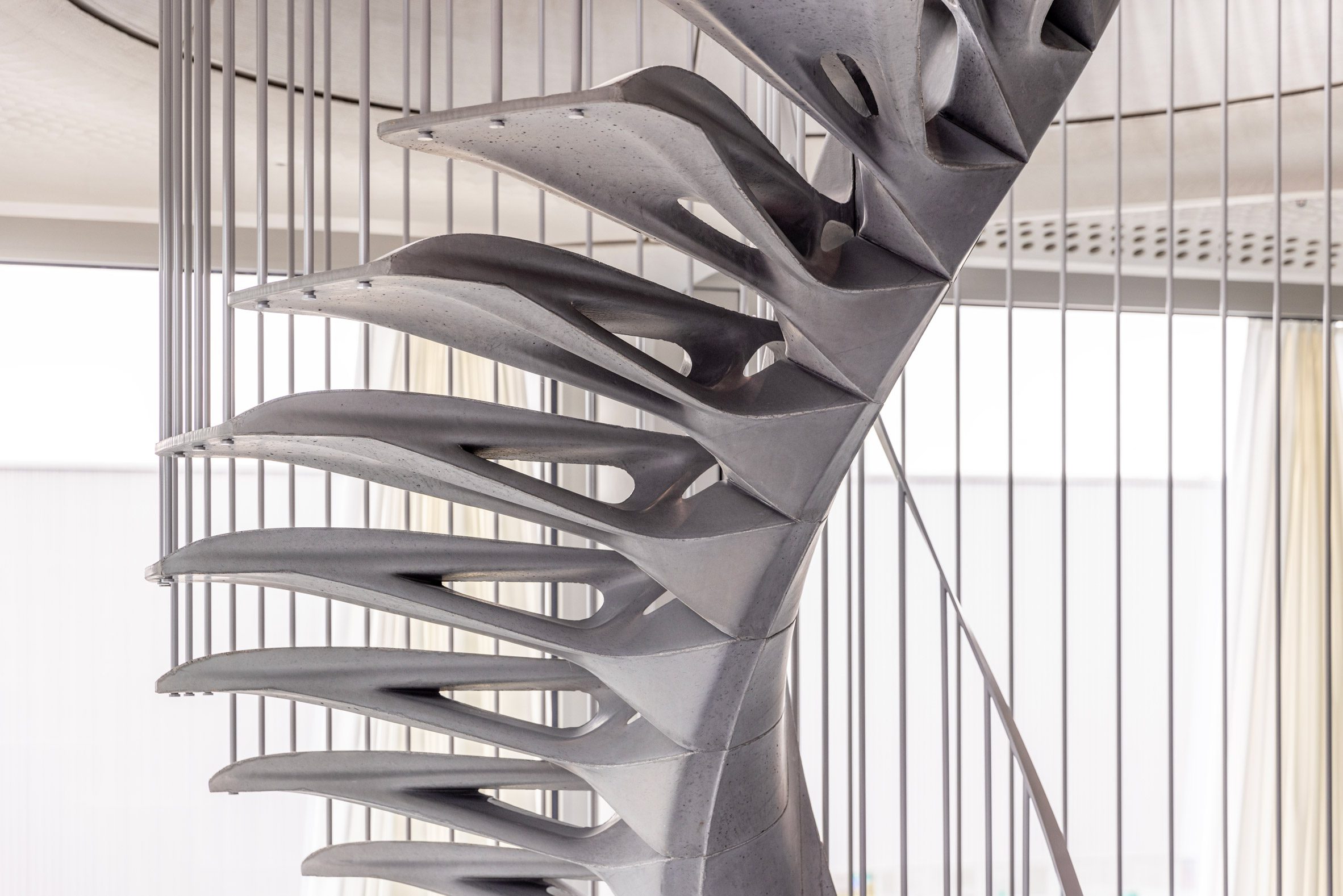
"Customised concrete structures are a challenge for conventional formwork," said Dillenburger. "Digital design-to-production frameworks with 3D-printed formwork offer huge advantages for architectural expression, structural performance and material efficiency."
"The steps have a thickness of only 20 millimetres and have been structurally optimised for drastic weight reduction," he continued. "Their production leads to little waste as a single set of 3D-printed formwork permits the production of all the steps."
The moulds for the steps are 3D printed from carbon fibre-reinforced PET plastic. While some engineers might be tempted to 3D-print the stairs directly out of concrete, the researchers on the project see an advantage in printing the formwork instead.
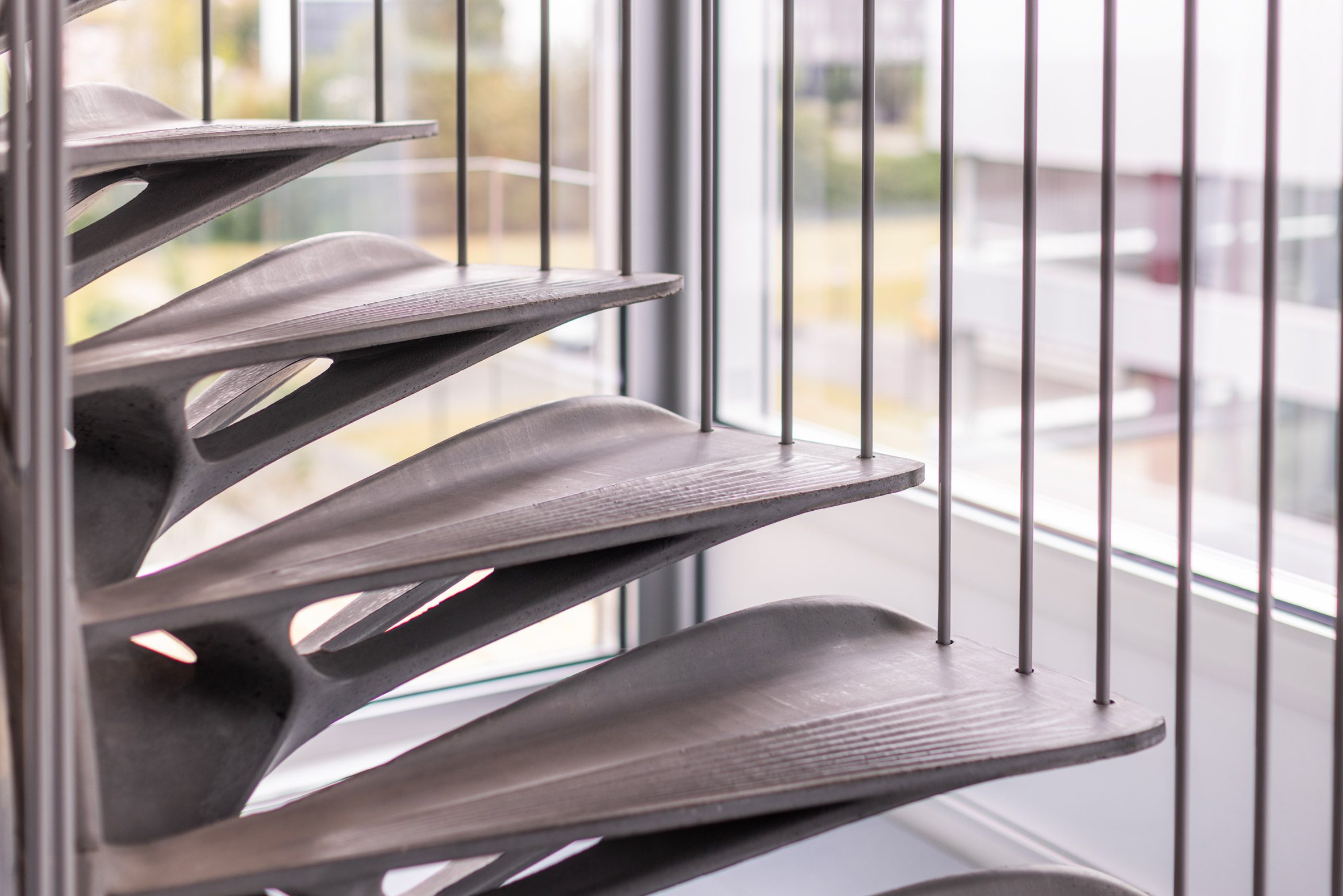
"A compact, reusable set of 3D-printed formwork can be used to repeatedly cast multiple steps," research assistant Angela Yoo told Dezeen.
"This enables the assembly of multiple flights of stairs with a minimal amount of digital fabrication, making it an ideal solution for the scalable production of bespoke designs."
This approach also allows for the integration of steel reinforcement, she added, which is generally incompatible with 3D printing as the bars get in the way of fabrication.
The Cadenza staircase was assembled off-site and lowered into the NEST building by crane, although ETH Zurich says it can be handled and assembled without heavy machinery and be installed in tight spaces, including during retrofits.
The individual steps are made of ultra-high-strength, steel fibre-reinforced concrete and weigh 45 kilograms – around 60 per cent less than a conventional concrete step. Different designs are possible using the same computational workflow, which was developed with Swiss firm ROK Architects.
Assembly is facilitated by two components: the first is a series of interlocking connectors printed into each step to attach one to another with precision, and the second is a system of three steel alloy cables that run through channels in the steps along the spine of the staircase.
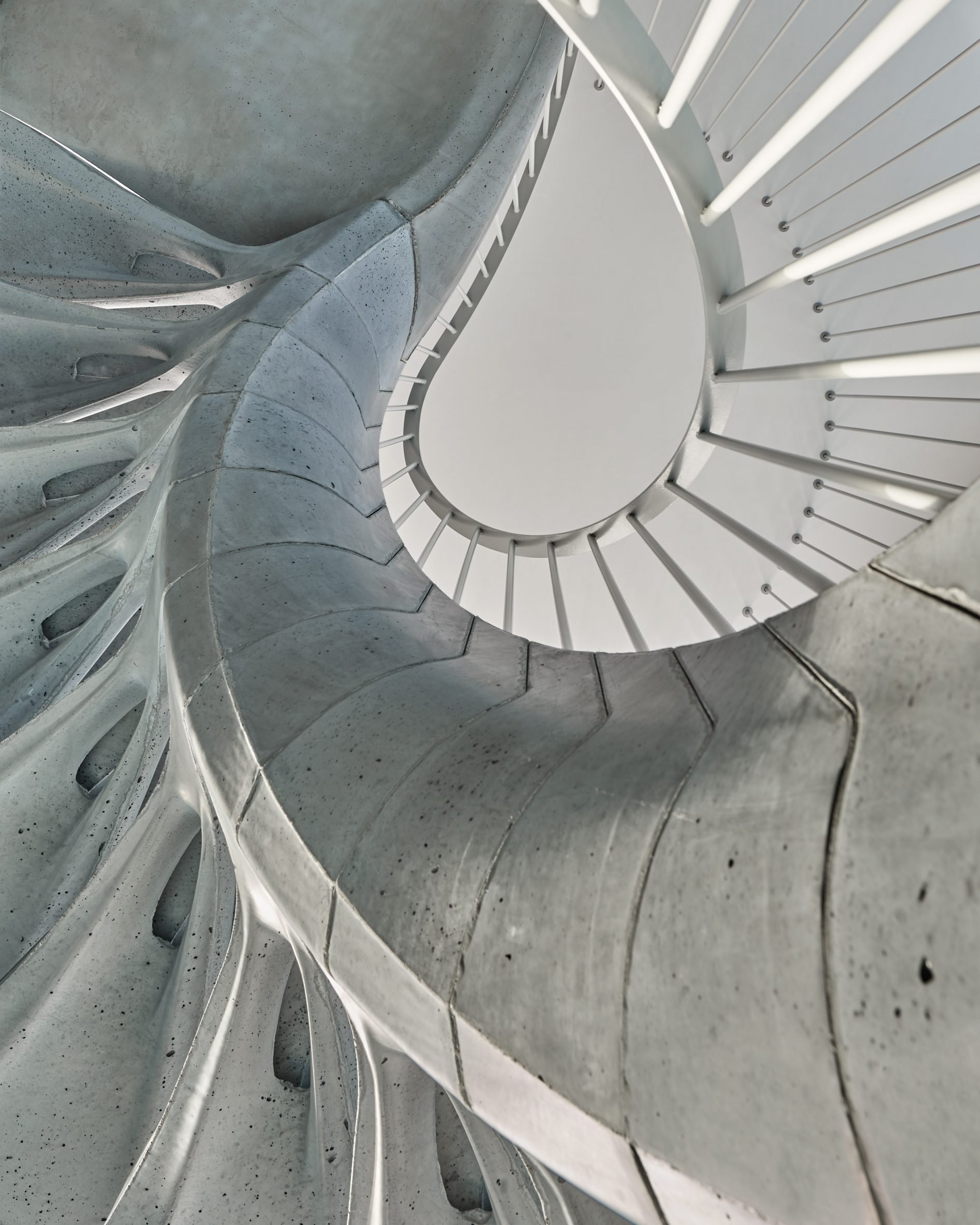
It is a post-tensioning system, so tension is only applied to these bars once the steps are in place, through the brief application of heat via a generator. This has the effect of holding the steps tight to the centre of the staircase.
"The prestressing is based on so-called 'memory steel', which can develop strong forces through heating and cooling," said ROK co-founder Michael Knauss. "Compared to conventional methods, this system saves space and is easy to use."
The tensioning system can be disassembled and the individual steps can be dismounted, making this a circular construction technique, while the concrete itself is expected to have a long life that some argue compensates for its high carbon emissions.

"In many ways, prefabricated concrete parts contribute to sustainability in construction," said Klaus Einfalt, the CEO of fabrication partner SW Umwelttechnik. "Their stability, longevity and recyclability make them an essential factor for a sustainable future in construction."
The NEST building is led by Swiss research institutions Empa and Eawag and was opened in 2016. It consists of three open platforms on which different modules like the STEP2 Unit can be installed for a limited period of time, before being dismantled once research ends.
Previous work undertaken at the facility has included the HiRes Concrete Slab ceiling with 3D printed ventilation ducts and a robotic construction method for timber structures.
The post ETH Zurich explores novel fabrication method for light and reusable concrete staircase appeared first on Dezeen.
What's Your Reaction?














